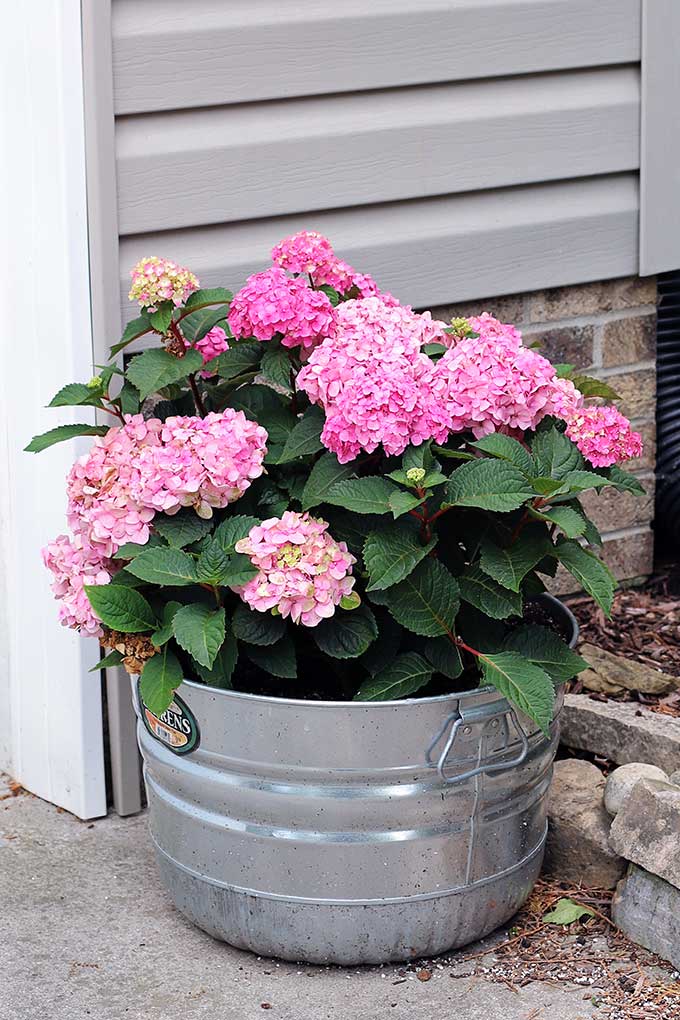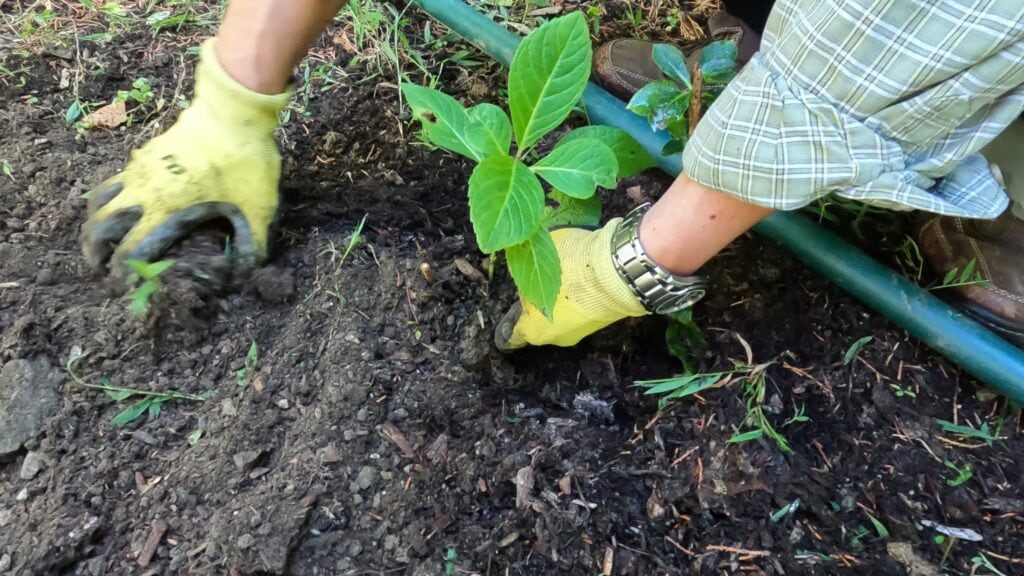Choosing the Right Location for Your Hydrangeas
When it comes to planting hydrangeas outside, selecting the right location is crucial for their growth and blooming. Hydrangeas require a specific set of conditions to thrive, including the right amount of sunlight, soil type, and drainage. To determine the best spot for your hydrangeas, start by assessing your yard’s conditions. Consider the amount of sunlight your yard receives, as hydrangeas generally require partial shade to full sun, depending on the variety.
Soil type is also an essential factor to consider. Hydrangeas prefer well-draining soil that is rich in organic matter. If your soil is heavy clay or sandy, you may need to amend it to create a more suitable environment for your hydrangeas. Additionally, consider the drainage in your yard, as hydrangeas don’t like to sit in waterlogged soil. If your yard is prone to flooding or has poor drainage, you may need to create a raised bed or mound to plant your hydrangeas.
To choose the best spot for your hydrangeas, take note of the surrounding plants and trees. Hydrangeas can grow quite large, so make sure to leave enough space for them to mature. Also, consider the wind direction and speed, as hydrangeas can be sensitive to strong winds. By carefully evaluating your yard’s conditions and choosing the right location, you’ll be well on your way to growing healthy and thriving hydrangeas.
When deciding how to plant hydrangeas outside, keep in mind that the location you choose will impact their growth and blooming. By selecting a spot with the right amount of sunlight, soil type, and drainage, you’ll be creating an ideal environment for your hydrangeas to flourish. With proper care and attention, your hydrangeas will reward you with beautiful blooms and lush foliage for years to come.
Preparing the Soil for Hydrangea Planting
Soil pH is a critical factor to consider when planting hydrangeas outside. Hydrangeas prefer a slightly acidic to neutral soil pH, ranging from 6.0 to 7.0. To determine your soil’s pH level, you can purchase a soil testing kit or send a sample to a laboratory for analysis. If your soil pH is too high or too low, you can amend it by adding organic matter such as compost or well-rotted manure.
Adding organic matter to your soil not only adjusts the pH level but also improves its structure and fertility. Compost, in particular, is an excellent amendment for hydrangeas, as it provides essential nutrients and improves soil drainage. To create a nutrient-rich soil environment for your hydrangeas, mix 2-4 inches of compost into the top 6-8 inches of soil.
In addition to adjusting the soil pH and adding organic matter, it’s essential to remove any debris, rocks, and weeds from the planting area. This will ensure good soil-to-root contact and prevent competition for water and nutrients. If your soil is heavy clay or sandy, you may need to add additional amendments such as perlite or vermiculite to improve its drainage and aeration.
When learning how to plant hydrangeas outside, it’s crucial to understand the importance of soil preparation. By adjusting the soil pH, adding organic matter, and removing debris, you’ll create an ideal environment for your hydrangeas to thrive. A well-prepared soil will support healthy root growth, promote blooming, and reduce the risk of disease and pests.
Before planting your hydrangeas, make sure to prepare the soil according to the specific needs of the variety you’re growing. Some hydrangeas, such as bigleaf hydrangeas, require more acidic soil, while others, like panicle hydrangeas, prefer slightly alkaline soil. By taking the time to prepare your soil properly, you’ll be rewarded with beautiful blooms and lush foliage for years to come.
How to Plant Hydrangeas Outdoors: A Step-by-Step Guide
Planting hydrangeas outside can be a straightforward process if you follow the right steps. To ensure successful planting, it’s essential to dig the right-sized hole, handle the roots with care, and water properly after planting. Here’s a step-by-step guide on how to plant hydrangeas outside:
Step 1: Dig the Right-Sized Hole – Dig a hole that is twice as wide and just as deep as the root ball of the hydrangea plant. If your soil is poorly draining, consider raising the bed by 6-8 inches to improve drainage.
Step 2: Handle the Roots with Care – Gently remove the hydrangea plant from its container, taking care not to disturb the roots. If the roots are wrapped in burlap, remove the burlap and any string or wire that holds it in place.
Step 3: Place the Plant in the Hole – Position the hydrangea plant in the hole, making sure the crown (where the stem meets the roots) is level with the soil surface. If necessary, add a layer of organic matter such as compost to adjust the soil level.
Step 4: Fill the Hole with Soil – Fill the hole with soil, gently firming it around the roots as you go. Make sure to leave enough space between the soil surface and the crown to allow for proper watering.
Step 5: Water Properly – Water the hydrangea plant thoroughly after planting, making sure the soil is moist but not waterlogged. During the first growing season, keep the soil consistently moist, but not waterlogged.
By following these steps, you’ll be able to plant your hydrangeas outside with confidence. Remember to choose a location with the right amount of sunlight, soil type, and drainage, and to prepare the soil properly before planting. With proper care and attention, your hydrangeas will thrive and provide beautiful blooms for years to come.
When learning how to plant hydrangeas outside, it’s essential to remember that proper planting techniques can make all the difference in the success of your plants. By following these steps and taking the time to prepare the soil properly, you’ll be well on your way to growing healthy and thriving hydrangeas.
Watering and Mulching Your Newly Planted Hydrangeas
Proper watering and mulching techniques are crucial for newly planted hydrangeas. Hydrangeas need consistent moisture, especially during the first growing season. However, overwatering can be detrimental to the plant’s health. To avoid this, water your hydrangeas deeply but infrequently, allowing the soil to dry slightly between waterings.
One way to ensure consistent moisture is to apply a layer of organic mulch around the base of the plant. Mulch helps retain moisture in the soil, suppresses weeds, and regulates soil temperature. Choose a mulch that is rich in organic matter, such as wood chips or bark, and apply a 2-3 inch layer around the plant.
When watering your hydrangeas, make sure to water at the base of the plant, avoiding the leaves to prevent fungal diseases. Watering in the morning or early afternoon allows the plant to absorb the water throughout the day. Avoid getting water on the leaves or crown of the plant, as this can cause rot and other problems.
In addition to mulching, consider using a drip irrigation system or soaker hose to deliver water directly to the roots of the plant. This can help reduce evaporation and runoff, ensuring that the plant receives the water it needs.
By following these watering and mulching tips, you can help your newly planted hydrangeas establish a strong root system and thrive in their new environment. Remember to monitor the plant’s water needs and adjust your watering schedule accordingly. With proper care and attention, your hydrangeas will provide beautiful blooms and lush foliage for years to come.
When learning how to plant hydrangeas outside, it’s essential to understand the importance of proper watering and mulching techniques. By providing consistent moisture and regulating soil temperature, you can help your hydrangeas establish a strong root system and thrive in their new environment.
Fertilizing and Pruning Hydrangeas for Optimal Growth
Fertilizing and pruning are essential for promoting optimal growth and blooming in hydrangeas. When it comes to fertilizing, choose a balanced fertilizer that is rich in nutrients such as nitrogen, phosphorus, and potassium. Apply the fertilizer in the early growing season, following the manufacturer’s instructions for application rates and timing.
Pruning is also crucial for maintaining the health and shape of your hydrangeas. Prune your hydrangeas in late winter or early spring, removing any dead or damaged branches. Cut back the stems to about 12-18 inches from the ground, making clean cuts just above a bud or lateral branch. This will help promote new growth and encourage blooming.
When pruning, make sure to remove any weak or spindly growth, as well as any branches that are rubbing against each other. This will help improve air circulation and reduce the risk of disease. Also, remove any suckers or water sprouts that are growing from the base of the plant, as these can take energy away from the rest of the plant.
It’s also important to note that different types of hydrangeas have different pruning requirements. For example, bigleaf hydrangeas should be pruned in late winter or early spring, while panicle hydrangeas can be pruned in late spring or early summer. Make sure to research the specific pruning requirements for your type of hydrangea to ensure optimal growth and blooming.
By fertilizing and pruning your hydrangeas regularly, you can promote optimal growth and blooming, and keep your plants looking their best. Remember to also provide your hydrangeas with proper care and attention, including watering, mulching, and protecting from pests and diseases.
When learning how to plant hydrangeas outside, it’s essential to understand the importance of fertilizing and pruning for optimal growth and blooming. By providing your hydrangeas with the right nutrients and pruning them regularly, you can promote healthy growth and encourage beautiful blooms.
Common Mistakes to Avoid When Planting Hydrangeas Outdoors
When planting hydrangeas outside, there are several common mistakes to avoid in order to ensure the health and success of your plants. One of the most common mistakes is planting too deeply, which can cause the roots to rot and the plant to become waterlogged. To avoid this, make sure to plant your hydrangeas at the same depth as they were in the pot, and avoid burying the crown (where the stem meets the roots) under soil.
Another common mistake is not providing enough sunlight for your hydrangeas. While hydrangeas can tolerate some shade, they generally require at least 4-6 hours of direct sunlight per day to bloom well. Make sure to choose a location that receives sufficient sunlight, and consider using a trellis or other support to help your hydrangeas grow upwards and receive more sunlight.
Not watering properly is also a common mistake when planting hydrangeas outside. Hydrangeas require consistent moisture, especially during the first growing season. However, overwatering can be detrimental to the plant’s health. To avoid this, make sure to water your hydrangeas deeply but infrequently, and avoid getting water on the leaves or crown of the plant.
Other common mistakes to avoid when planting hydrangeas outside include not fertilizing regularly, not pruning properly, and not protecting the plants from pests and diseases. By avoiding these common mistakes, you can help ensure the health and success of your hydrangeas and enjoy beautiful blooms for years to come.
When learning how to plant hydrangeas outside, it’s essential to understand the common mistakes to avoid in order to ensure the health and success of your plants. By following these tips and avoiding common mistakes, you can help your hydrangeas thrive and enjoy beautiful blooms for years to come.
Pest and Disease Control for Hydrangeas
Hydrangeas are generally a low-maintenance plant, but they can still be susceptible to pests and diseases. To keep your hydrangeas healthy and thriving, it’s essential to identify and control any potential problems early on. Here are some common pests and diseases that can affect hydrangeas and how to control them:
Aphids are small, soft-bodied insects that can feed on the sap of hydrangea leaves and stems. To control aphids, use neem oil or insecticidal soap, and make sure to spray the undersides of the leaves where aphids tend to congregate.
Whiteflies are tiny, winged insects that can also feed on the sap of hydrangea leaves and stems. To control whiteflies, use yellow sticky traps or insecticidal soap, and make sure to spray the undersides of the leaves where whiteflies tend to congregate.
Powdery mildew is a fungal disease that can cause a white, powdery coating to form on the leaves of hydrangeas. To control powdery mildew, use a fungicide specifically designed for hydrangeas, and make sure to remove any infected leaves or stems to prevent the disease from spreading.
Other common pests and diseases that can affect hydrangeas include spider mites, scale, and root rot. To prevent these problems, make sure to provide your hydrangeas with good air circulation, water them properly, and fertilize them regularly.
When learning how to plant hydrangeas outside, it’s essential to understand the importance of pest and disease control. By identifying and controlling potential problems early on, you can help keep your hydrangeas healthy and thriving, and enjoy beautiful blooms for years to come.
By following these tips and taking the necessary steps to prevent pests and diseases, you can help ensure the health and success of your hydrangeas. Remember to always monitor your plants for signs of pests or diseases, and take action quickly to prevent the problem from spreading.
Tips for Winter Care and Protection of Hydrangeas
Hydrangeas are sensitive to harsh winter conditions, and proper care and protection are essential to ensure their survival. Here are some tips on how to protect your hydrangeas from winter damage:
Apply a layer of mulch: Mulch helps to retain moisture in the soil, suppress weeds, and regulate soil temperature. Apply a 2-3 inch layer of organic mulch such as wood chips or bark around the base of your hydrangeas.
Protect from wind and frost: Wind and frost can cause damage to hydrangea leaves and stems. Use burlap or a frost blanket to protect your hydrangeas from wind and frost.
Bring potted hydrangeas indoors: If you have potted hydrangeas, bring them indoors during the winter months to protect them from harsh weather conditions. Place them in a bright, cool location, and water them sparingly.
Water carefully: Hydrangeas need less water during the winter months, but they still need some moisture to survive. Water them carefully, making sure not to overwater, which can cause root rot.
Prune in late winter: Prune your hydrangeas in late winter, removing any dead or damaged branches. This will help promote new growth and encourage blooming in the spring.
By following these tips, you can help protect your hydrangeas from harsh winter conditions and ensure their survival. Remember to also provide your hydrangeas with proper care and attention during the growing season to promote healthy growth and blooming.
When learning how to plant hydrangeas outside, it’s essential to understand the importance of winter care and protection. By providing your hydrangeas with the right care and attention during the winter months, you can help ensure their survival and promote healthy growth and blooming in the spring.






